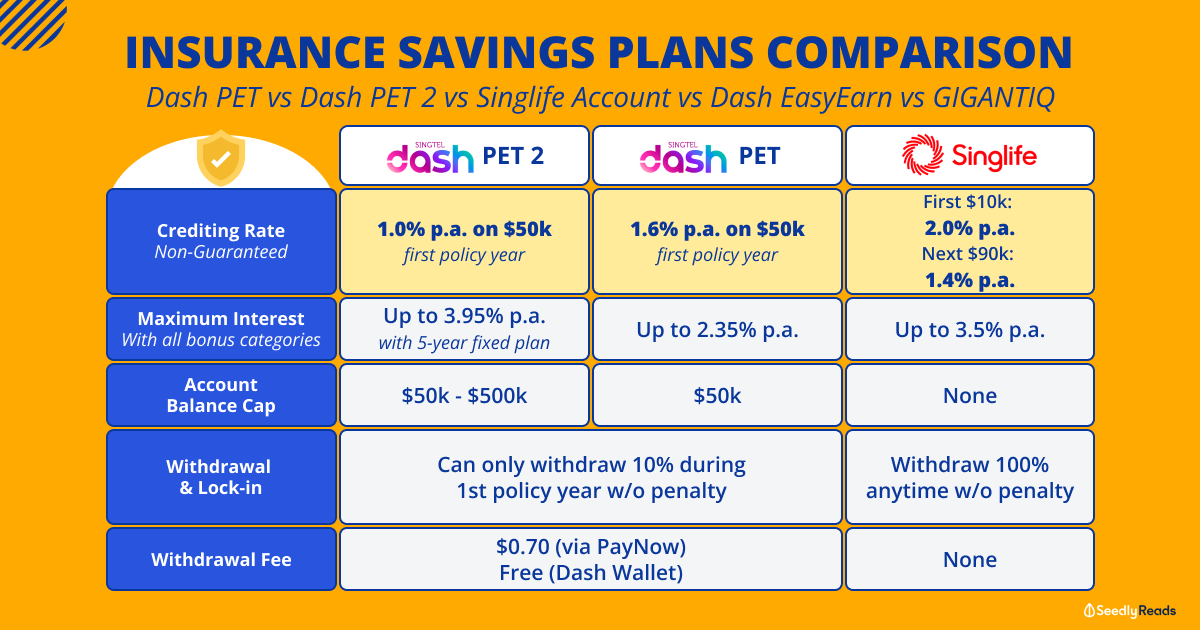Advertisement
Anonymous
With a take-home pay of $1.5k, what are my realistic options medical & life insurance, and saving plans (if any)?
Age 26. Working in the landscape industry. Have a degree in that's not relevant to my current career. Entered it because of passion in horticulture.
Current expenses are broken down to:
Mom - 100
Transport - 120
Phone bill - 30
Uni loan - 150
Expenses (food, recreation, wants) - 400
The remaining I will set aside for savings (holiday, future wedding, future wants, life & health insurance etc.)
I project that my take-home will increase to 1.9k in 2 years.
Any help is appreciated.
2
Discussion (2)
Learn how to style your text
Hariz Arthur Maloy
17 Nov 2019
Independent Financial Advisor at Promiseland Independent
Reply
Save
Pang Zhe Liang
17 Nov 2019
Lead of Research & Solutions at Havend Pte Ltd
As a general rule, you should spend 10% to 20% of your annual income on healthcare insurance, basic life cover, and critical illness coverage. In your case, it will be $150 to $300 monthly.
As a general rule, you should save and invest 20% to 30% of your annual income. In your case, $300 to $450 monthly. Savings and investment can be defined in many forms, e.g. normal bank savings, bonds, shares, endowment, annuity.
From your breakdown, you don't seem to be overspending - except for expenses where it will be good to have a more detailed breakdown. This way, you can understand yourself better and plan for your future. Here is a link that may help you: https://www.blog.pzl.sg/understanding-your-pers...
As a priority for now, we will suggest for you to look into healthcare insurance first - private integrataed shield plan. Here is why: https://www.blog.pzl.sg/is-integrated-shield-pl...
For life insurance, it will be good to meet with your consultant to understand further on the available options in an attempt to find the right one for you. Some options include term, whole life, and investment-linked policy.
Here are some known guidelines to help you:
Basic Life cover = 10 times annual income
Critical Illness coverage = 5 times annual income
Take note that not all critical illness coverage are the same, i.e. different definitions and terms for payout. Therefore, it will be critically important to understand it further before making your decision.
With your remaining budget, it will be valued to set a short, mid and long-term goal together to achieve your goals, e.g. wedding and house in 5 years' time, yearly holiday trips. From these goals, we can decide on the best options for your monthly surplus and savings needs.
Finally, with your expected increment, it always valued to save it, instead of spending it. At the end of the day, it is what you keep that matters. Plan with a long-term goal in mind, then work backwards. The rate of your success is heavily dependent on your vision to see your future and how merticulous you can plan today.
Reply
Save
Write your thoughts
Related Articles
Related Posts
Related Posts
Advertisement








Follow the rules of thumb.
10 X Annual Income in the event of death
5 X Annual Income in the event of Illness
These two things will cost 8% of your annual income.
So if you make 1.5k/mth or 18k per year, you should have 180k death cover, 90k illness cover, these would cost you at max about less than 1440/yr or 120/mth.
Save 20% aside of whatever you earn for retirement.
When you make more in the future, you can decide to top up to get more cover and save more.